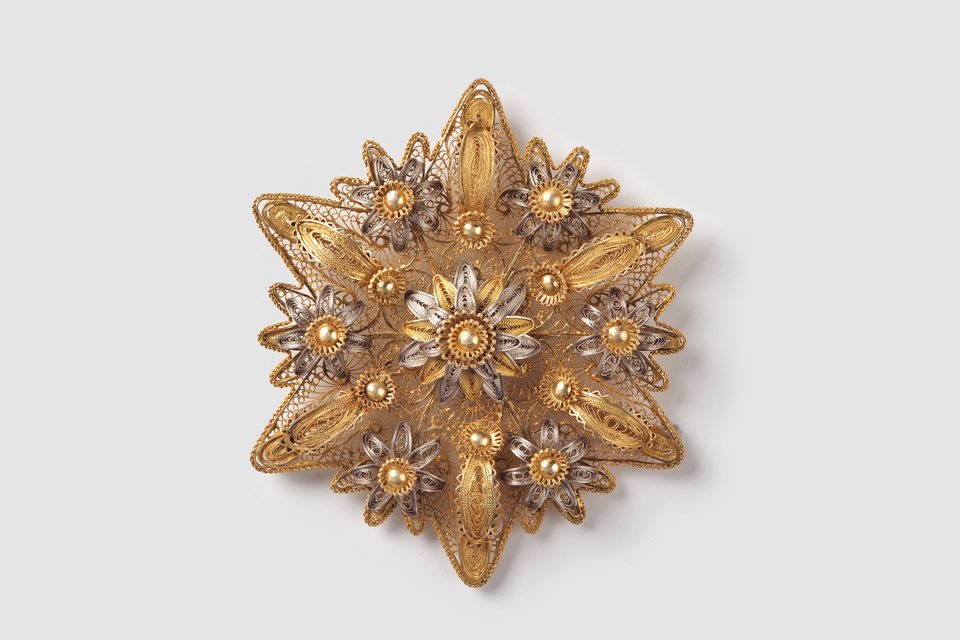Topelik is an adornment of the traditional female headdress called fez. The adornment is silver, gold gilt with hexagonal star form and floral decoration, made with openwork multi-tiered filigree technique.
An imposed five-tier filigree rosette with core bead and polypetalous flower made of silver wire is located in the center of the decorative space. The rosette is surrounded by a wreath which consists of six silver flowers made with filigree and granulation techniques. From the central rosette in the direction of the points, there are six small filigree flowers with prolonged, slightly curved openwork leaves with a wavy edge.
Between them there are two-tiered filigree rosettes with beads.
Topelik is sewn to the edges from above the fez. Topeliks made by Bakhchysarai masters are distinguished by their special splendor, richness of decoration and perfect technical execution. For centuries Bakhchysarai craftsmen created female filigree jewellery, in which they invested a special understanding of beauty and harmony.
Their originality is determined by settled traditions. Ornaments and forms of products are full of certain symbolism, which is a guide in the tradition of Crimean Tatars, indigenous people of Ukraine, from generation to generation. The main ornamental motif of the fez-topelik is the "gul" (rose) motif - a female symbol, which is often repeated in the patterns of the top part. The traditional set also includes oak leaves ("emen yapragi") and poplar leaves ("selbi"). The hexagonal star is a symbol in Islam, which is found in all types of Crimean Tatar decorative art. It was named "The Star of Dawud".
en

